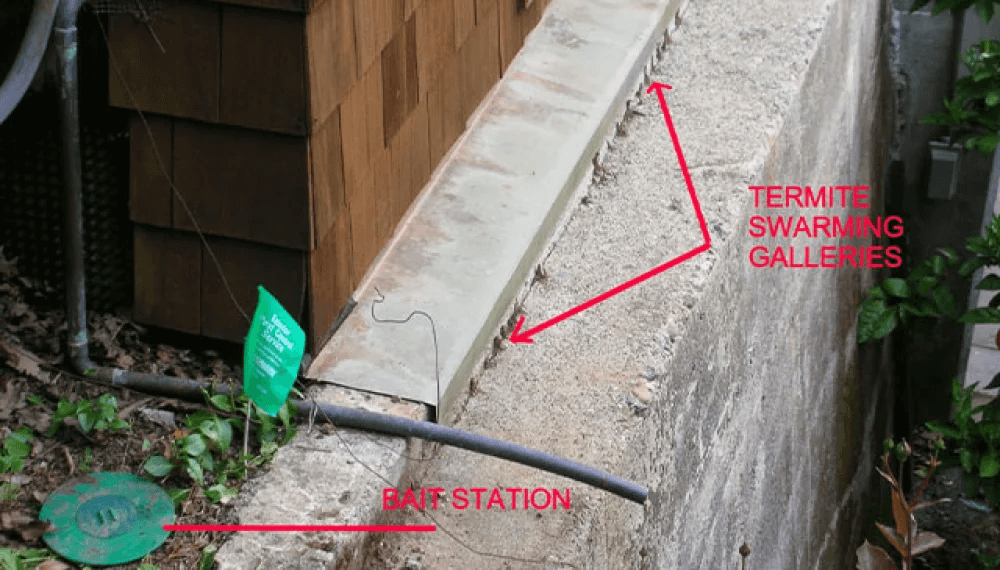Here are a few common questions our homeowners and real estate agents frequently ask.
- Bait stations vs. Perimeter Treatments – What’s best?
- We don’t use bait stations given their limited effectiveness and notorious rate of failure. Why invite the termites for dinner? Given the size of the bait, they’ll likely find the house before the bait stations.
- We tried many treatments and have found Termidor termiticide to be the most effective against subterranean termites. Since September 2000 we have been using Termidor termiticide and have had 100% success to this date. It’s treat and forget! Plus there are no quarterly service fees and we offer a 5 year warranty with Termidor perimeter treatments.
- Tenting/Fumigation – Are there any residual effects?
- Vikane Sufuryl Fluoride is a non-residual gas and it is used to deplete the structure of oxygen. Once the fumigation is completed, the tarps are removed, the structure is vented with fans for 24 hours and tested to verify that the structure is cleared and certified for re-occupancy. For more information and the MSDS check the Dow website for Vikane or the EPA’s webpage on Sulfuryl Fluoride.
- Is Termidor dangerous to my family and pets?
- The active ingredient in Termidor termiticide is “Fipronil” the same reformulated ingredient that can be found in some of the flea control pet products. When applied for termite treatment, Termidor is injected into the ground, under patios/walkways and/or onto soil infested areas hard to reach (in sub areas and beneath decks /stairs). The product has no odor scent or taste and is unknowingly picked up by termites making it so effective. For more information and the MSDS check the website for Termidor.
- Termites are flying in my house! Why and what should I do?
- Termites swarm to start new colonies. Sometimes they unknowingly swarm indoors, but the environment is not conducive to their survival and they will shortly die. Call us for a thorough inspection to determine what is the best treatment and to determine if there is any structural damage to your home. During the inspection, and depending upon the type of termite, we’ll gladly share some tips on what can be done until the treatment is performed.
- How can I get rid of dry rot/wood decay damage?
- Dry rot is caused by a fungus decaying the structural integrity of wood. Aside from repairing or replacing the damaged wood members, there is no easy way to remove dry rot damage. If fungus is present on the wood surface and damage has not yet occurred, the best is to immediately apply a registered fungicide and prevent moisture intrusion and/or retention with use of proper flashing, moisture proofing and/or wood preservatives. Call us for a professional inspection and we will provide you with a quality report and specific recommendations.
- How do I know if I have wood boring beetles in my house?
- There are many varieties of wood boring beetles, each with different infestation habits and some may be difficult to detect and identify, particularly to the untrained eye. Generally beetles are rarely seen but their damage is more evident with dust falling from wood members. Tenting and fumigation may be the best treatment, however sometimes a local treatment will suffice. The best course of action is to obtain a professional inspection and report with the appropriate recommendation.
- How can I prevent termites from infesting my home?
- Termites are part of the ecosystem and do serve a purpose; they return dead and dying trees back to the earth. That’s fine in the forest but not in our homes. Here are a few tips and actions that will help against termite infestation:
- Grade soil away from the home to remove any earth-wood contacts.
- Fix any plumbing leaks, especially in the bathrooms, the kitchen, laundry room and crawl spaces.
- Patch, seal and paint all areas subject to moisture intrusions (showers, windows, doors, exterior walls…)
- Keep the exterior siding well caulked, sealed and painted.
- Check with a Geotechnical Engineer for any drainage problems.
- Store goods and wood material without any direct ground contact.
- Clear sub areas and crawl spaces beneath your house and keep decks free of wood and tree debris.
- Call us and have periodic limited inspections every 3 to 4 years.
